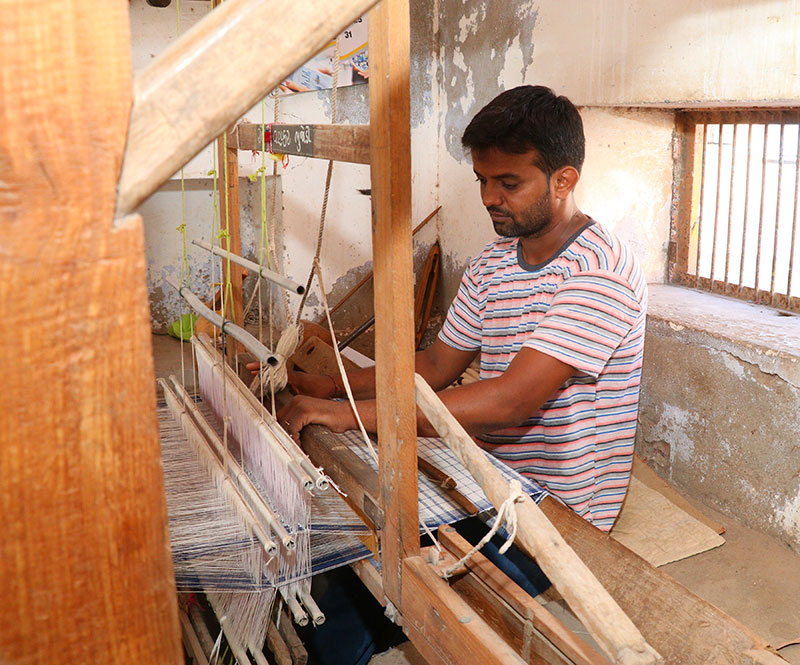Ramesh Virji Mangariya and his team of artisans make luxuriously soft, exquisitely designed scarves using Kala cotton, indigenous to India’s Kutch region in the western part of the country. One of the oldest kinds of cotton in the world, dating back to 3,000 B.C., this special varietal requires no pesticides, and for centuries was used for everything from turbans to grain storage bags. Because of the availability of mass-produced, cheaper materials, Kala cotton all but disappeared from Kutch by 1960. After nearly 50 years of absence, Mangariya re-introduced the Kala cotton yarn to Kutch in 2011.
Today, Kala cotton is grown by many local farmers. The first step in the art-making process is to prepare hanks for natural dyeing. After women prepare the loom, the weaving is generally done by men. Sometimes a weaver can loom several meters in a day if the design is simple, but the process can last four days for more complicated motifs. Mangariya’s designs have steadily gained demand in urban markets because of their unique look and texture, as well for the exquisite breathability of Kala cotton fabrics.
Says Mangariya, “I slowly realized any imperfections in Kala cotton woven textiles were actually their selling point.” Indeed, Kala cotton’s intense, richly soft texture also means that it does not always have a uniform appearance. And that’s just fine by consumers. “There’s a very good market for these kinds of items,” explains Mangariya, “Apart from being an ancient textile, we are offering sustainability and growth to weavers.”
